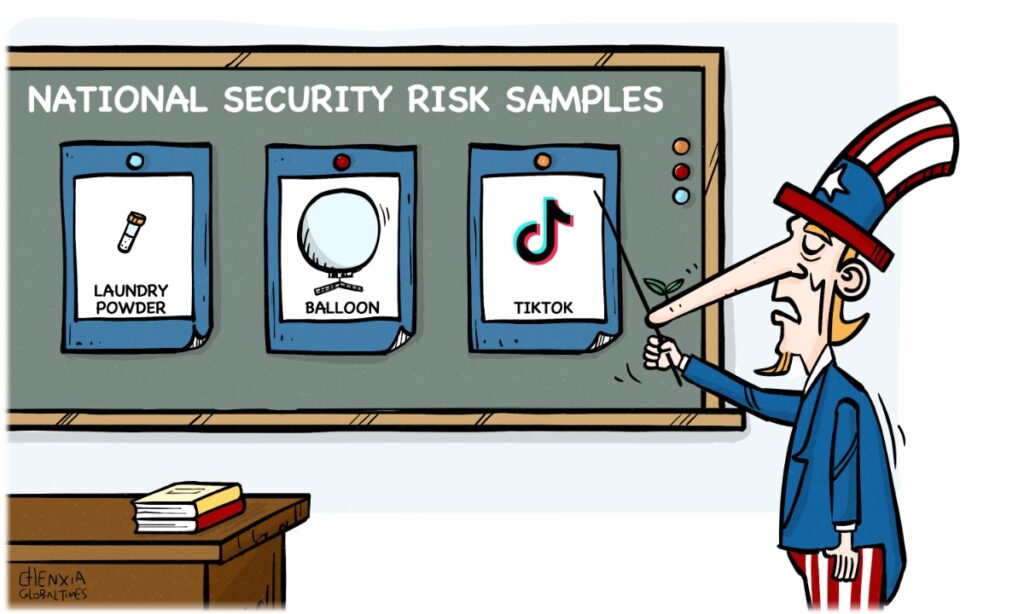According to reports, the US-based Pamir Consulting has released a new report titled “Displays are the New Batteries,” claiming that China’s rise in the display manufacturing industry may bring “national security” concerns to the US. China’s display industry has been in the US’ crosshairs for a while. John Moolenaar, the newly appointed chairman of US House select committee on strategic competition with China, wrote to Secretary of Defense Lloyd Austin in September, requesting that the Pentagon place two Chinese panel manufacturers on the DoD’s blacklist as Chinese military companies. One of the authors of the new report was also the main black hand behind SMIC being placed on the US sanctions list. It seems that China’s display industry is being sent to the assembly line of the US’ suppressive policies in the name of “national security.”
It has to be said that from corn processing plants, cranes and TikTok to Chinese garlic and displays, the US has always given people a new understanding of the scope of its “national security” and sense of security. Some commentators said, “US security is like a basket, and things from all walks of life can be put into it.” Others said, “The US may only feel safe if it dominates in all fields.” In recent years, some Chinese industries have been inexplicably labeled as “threats to US security” after gaining relative competitive advantages. Perhaps it is not because US national security is weak. Behind this “fragile” sense of security, there is a hidden agenda of trade protectionism and industrial monopoly.
One of the authors of the latest report on displays, in all apparent seriousness, stated that displays are increasingly important pieces of computerized military equipment, while the other author falsely claimed that the rise of China’s display industry was due to government subsidies. “Securitization” is the typical approach to suppressing China’s industries. With the hammer of “US national security” in the left hand and “Chinese government subsidies” in the right, every industry in China that rises will be targeted. Although the display manufacturing emerged in the US, Japan and South Korea had dominated it for many years. Why did the US never mention “security threats” when Japanese and Korean manufacturers led the global display industry, while some people started to hype “security threats” only after China showed its competitive advantages? Obviously, this is just an excuse for the US to contain and suppress China.
Is it really about national security? When faced with this question, Christophe Fouquet, CEO of ASML, the Dutch semiconductor equipment maker that is under US pressure, said that much of ASML’s business with China is focused on mature technology that is less relevant to national security concerns. According to the logic of the US scholars’ report, all electronic products could pose a “security risk.” Should the consumer market of global trade, worth as much as trillions annually, be reevaluated under this US sense of security? Who will foot the bill for the ensuing disruption to industry and supply chains? The narrative of “fragile” security that the US has made up to suppress China ironically spreads a pervasive sense of insecurity worldwide.
What is even more concerning is that this is not only an attempt to smear Chinese companies but also sends a disturbing signal that emerging nations and the Global South countries’ right to development might be at risk. China’s display industry rose from nothing to being the world top in terms of industry-wide output value not, as the report claims, due to “subsidies” but because Chinese companies have grown step-by-step through self-driven innovation and steady progress in a competitive market. If China has any relative advantages, it lies in factors like its vast market, strong industrial chain supporting capabilities, and the rise of a series of consumer electronics brands, which together have provided a strong foundation for the growth of China’s display industry. The R&D intensity of top Chinese firms in the “technology and electrical hardware and equipment” sector has increased 646 percent over the past 10 years, compared with a 67 percent increase for US firms.
When developing countries like China work hard to establish their own industrial advantages, the US has resorted to non-market competition, citing “national security” in nearly absurd terms to suppress them. This casts a shadow over global development. Today, it is China’s display industry; which industry from which country will it be tomorrow? Must other nations cease development for the US to feel “secure”? Obviously, the general development aspirations of the international community do not agree with this logic of the US. With the economic integration and industrial linkage of countries, only by relying on innovation and cooperation to make the development pie bigger can we achieve common prosperity and security.
GT




